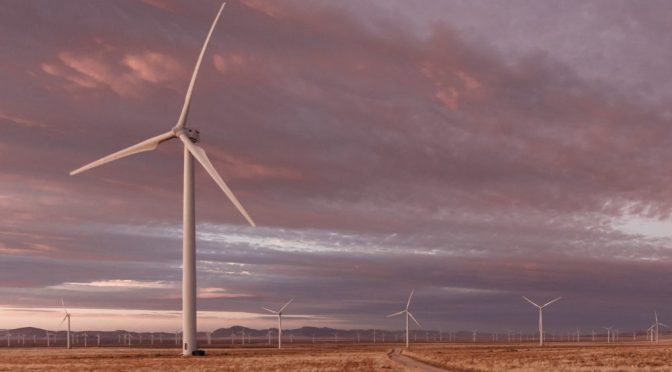As someone new to the renewable energy industry, this month’s Wind 101 Webinar Series offered an insightful and well-rounded look into the world of wind. From an overview of the market, to wildlife, siting & permitting, I walked away from the series feeling informed and excited to learn more! Below is a recap of my key takeaways.
PART I: OVERVIEW OF THE MARKET AND DRIVERS + THE FUNDAMENTALS OF WIND FINANCE
AWEA’s Celeste Wanner kicked off Part I of the series with an overview of the market and drivers for the US wind industry. In my opinion, this discussion was particularly insightful and got me excited about the future of wind energy. It’s clear that the growth of wind energy in the US is something to take note of and is not slowing down any time soon. Celeste offered powerful statistics throughout her discussion and a few that really stood out to me, including:
- Wind energy has tripled in the past 10 years.
- The US is now #2 in the world in terms of wind energy, with China at #1.
- The wind industry is present in all 50 states and employs over 120,000 Americans.
- Wind played a part in avoiding 198 million metric tons of CO2 in 2019, that’s equal to 42 million cars worth of carbon emissions!

PART II: DEVELOPMENT 101 + WILDLIFE, SITING & PERMITTING
Dr. Chris Ziesler, Director of Advisory Services at UL Renewables, got part II started with a discussion on wind resource assessment. As developers find a good place to build a wind farm, the next, and albeit more difficult struggle, is what to do after that. Chris took listeners through a detailed discussion on these different stages:
- Conducting a resource assessment
- Maps for prospecting
- Measurement campaigns
- Bankable reports
While that may seem like an information overload, Chris clearly and effectively explained these steps and even the newest members to the world of renewable energy will walk away feeling up to speed on these important stages.
Next up was Jackie Hanberg, Director of Environmental and Permitting Service at DNV GL. My interest was immediately piqued by these topics and Jackie did an excellent job making this discussion both interactive and informative. One key takeaway that I had from this section was that siting is a balancing act between natural resource considerations, human impacts, and the ability to generate and deliver power. In other words, you can’t just develop a wind farm anywhere!
- Special considerations are given to threatened or endangered species and species of concern.
- In terms of human considerations, sound impact is very important to note.
- When building a wind farm, it is essential to consider air traffic. You must coordinate with the Federal Aviation Administration, the Department of Defense, the military, and the Department of Homeland Security, as appropriate.
PART III: TRANSMISSION INTEGRATIONS ISSUES FOR RENEWABLE ENERGY + O&M, HEALTH & SAFETY AND ASSET MANAGEMENT
To round out the series, Michael Goggin, Vice President at Grid Strategies LLC, discussed some issues regarding transmission integrations for renewable energy. Personally, I felt like in order to get a well-rounded understanding of wind, it was important to hear about some of the challenges as well. Two universal physical problems that are presented when dealing with renewable energy are:
- The best sources of wind and solar are far from where people live.
- Regional exchange allows system balancing with higher penetration.
Growing up on the east coast, I’ve never thought of wind as being sparse. However, it turns out that a huge struggle lies behind the fact that renewable energy is stuck in interconnection queues. This means that there’s a lot of wind in sparsely populated areas, such as the middle of the country, rather than the coast. To counteract this challenge, Michael presented a winning formula of:
- Pro-active, multi-benefit planning
- Broad, beneficiary pay allocation
To wrap up the series, Holly Burnett, Senior Vice President at Natural Power, presented a discussion on operations and maintenance, health and safety and asset management. Holly’s presentation was engaging and understandable with the polls she implemented and her review of key terminology. Health and safety, operations and maintenance, and asset management are all interrelated and affect one another as it relates to plant operations. As a result, it is important to understand each of these components.
- Asset management: the contractual management of an asset of a renewable energy project.
- Operations and Maintenance: how the project is operating and what strategies are being used to operate it and maintain the equipment.
Regarding health and safety, it is imperative to instill a safety culture in every team. Although accidents do happen, the industry has a great track record for safety. Some of the major risks that are faced throughout these projects include:
- Electrical shock / arc flash
- Materials handling
- Working at height
In case you missed the event live, download the recording here. I highly recommend the series to anyone looking to get up to speed on the basics of wind energy quickly!
WHAT’S NEXT? SOLAR 101 WEBINAR SERIES
Now that you’re caught up on what the Wind 101 Webinar series had to offer, it’s time to sign up for Solar 101! The Solar 101 Webinar Series will take place July 28 – 30 and include presentations and discussions on the following topics:
- Market Overview & Drivers for the U.S. Solar Energy Industry
- Project Finance & Investment?
- Wildlife, Siting and Permitting: Regional Differences?
- Bifacial Modules and the Albedo Effect
- Transmission and Integration
- Technological Advances & Solar + Storage Integration
Whether you’re new to the renewable energy space or a seasoned expert, the Solar 101 Webinar Series will offer powerful insights into the world of solar. It will be a can’t miss event and I hope you tune in July 28th!


